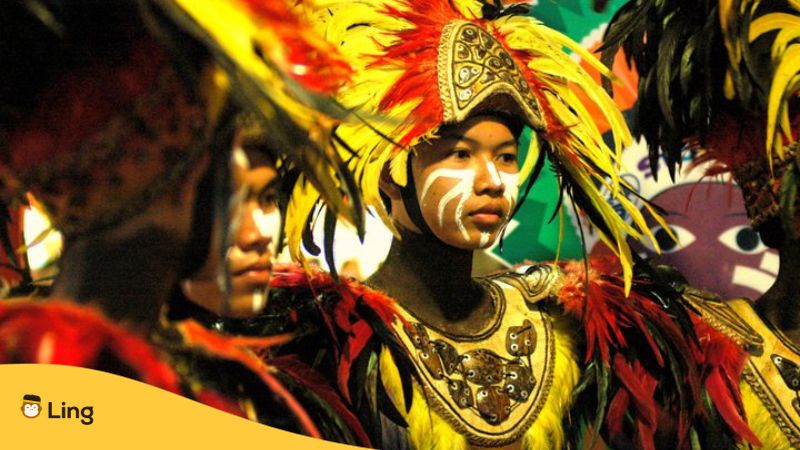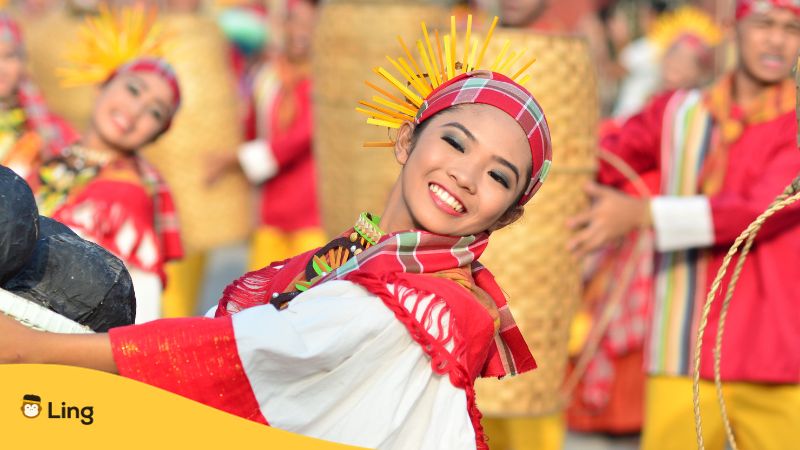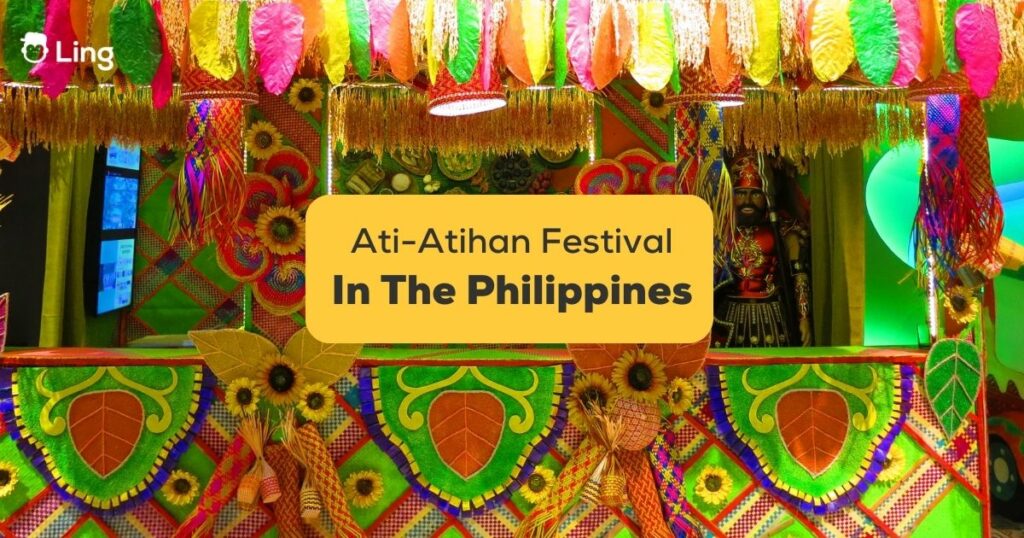Ever had one of those moments where every beat of a drum seems to resonate with the very core of your being? Well, let me take you on a little trip down memory lane to a place where music, dance, and history fuse into a spectacle of colors – the 800-year old Ati-Atihan Festival in Aklan. Imagine stepping into a whirlwind of colors, where every face painted black and adorned with tribal accessories tells a story. Sounds intriguing, right?
When I celebrated this festival in Malay, Aklan, it was nothing short of magical. The energy in the air was palpable. The streets, alive with a flurry of activities, were more than just a parade route; they were a canvas narrating tales of yesteryears. Every chant, every smile shared with locals, every rhythm of the drum felt like it was speaking directly to my soul. The hospitality of the Aklanons (the people from Aklan, Philippines), the delicious Filipino delicacies, and the sheer passion for preserving and showcasing their culture were heartwarming. It wasn’t just a festival; it was an immersive experience, one that left an indelible mark on my heart.
Ready to learn more about this festival and the related Tagalog words? Read on!
What Is Ati-Atihan Festival?
The Ati-Atihan Festival traces its roots back to the 13th century. Legend tells a tale of ten Bornean chieftains who sought refuge in Panay Island and were granted settlement by the Ati people (also called aetas). To show gratitude, the newcomers painted their skin dark and danced in homage to their gracious hosts. With time, the festival evolved, integrating both indigenous and religious elements. Today, it’s not just a celebration of the Ati people’s history but also a homage to the Santo Niño, or the infant Jesus.
Held annually in January, particularly on the third Sunday of the month in Kalibo, Aklan, the Ati-Atihan Festival is a week-long fiesta. During this time, the streets will be bursting with people in indigenous costumes, their bodies painted with vibrant hues and soot, dancing fervently to the compelling beats of drums. “Hala Bira!” – a local phrase encouraging everyone to keep going – becomes the mantra of the celebrations.
As one of the oldest and most celebrated festivals in the Philippines, Ati-Atihan has grown into a major tourist attraction. Visitors from around the world flock to Aklan, drawn by the allure of the lively street parades, traditional dances, and the infectious spirit of unity and joy that permeates the air.

Where Is Ati-Atihan Festival Celebrated?
The town of Kalibo, the province’s capital, is where the pulse of Ati-Atihan beats the loudest. Every year, its streets transform into vibrant stages, alive with the sounds, colors, and energy of the festival. Kalibo’s central square, Magsaysay Park, becomes a focal point of many activities, with dancing groups performing their heart out, competing for coveted titles and revelling in the festive atmosphere.
While Kalibo stands as the festival’s epicenter, the Ati-Atihan spirit isn’t confined to this town alone. Several towns within Aklan have been inspired by Kalibo’s festivities, each weaving its own unique version of Ati-Atihan. From small-scale parades to localized traditions, the echoes of “Hala Bira!” can be heard resonating through various parts of Aklan.
Just a stone’s throw away from Kalibo is the world-famous island of Boracay. While primarily known for its white-sand beaches, come January, even Boracay gets a taste of the Ati-Atihan magic. While not as grand as the celebrations in Kalibo, the island hosts its own version, allowing tourists to experience the festival’s flavor without leaving its sandy shores.
When Is Ati-Atihan Festival Celebrated?
The Ati-Atihan Festival reaches its zenith on the third Sunday of January each year. While the festival itself spans a week, culminating on this Sunday ensures that the celebrations end on a high note, leaving both locals and visitors with memories that last a lifetime.
Though the third Sunday is the main event, the festivities kick off much earlier. From the second week of January, the atmosphere in Kalibo starts to change. The initial days see smaller events, a buildup of sorts, preparing everyone for the grandeur that’s about to unfold. As the days progress, the events scale up in intensity, with street parades, dancing competitions, and religious ceremonies becoming more frequent and vibrant.
Noteworthy Dates Within The Celebration
- The Formal Opening Mass: This religious ceremony, usually held several days before the main event, signals the commencement of the Ati-Atihan Festival.
- Second Day Festivities: Highlighted by various tribes competing in dance and costume events.
- Last Day Extravaganza: The third Sunday, the culmination of the celebrations, is a daylong event filled with dancing, parades, and processions in honor of the Santo Niño. The day starts with a community mass and ends with the grand “Hala Bira” street party that continues well into the night.

Tagalog Words Related To The Ati-Atihan Festival
The Ati-Atihan Festival, with its rich tapestry of culture and history, has given birth to various terms and phrases that encapsulate its essence. For those unfamiliar with the local language, understanding these Tagalog words can deepen the appreciation of the festival. Here’s a helpful table breaking down some key terms related to Ati-Atihan.
| English | Tagalog |
|---|---|
| Festival | Pista |
| Dance | Sayaw |
| Street | Kalsada |
| Celebration | Pagdiriwang |
| Drum | Tambol |
| Costume | Kostyum |
| Tribe | Tribo |
| Indigenous People | Katutubong Tao |
| Music | Musika |
| Joy | Kasiyahan |
| Faith | Pananampalataya |
| Crowd | Madla |
| Tradition | Tradisyon |
| Parade | Parada |
| Cheers | Mabuhay |
By acquainting oneself with these terms, attendees and enthusiasts can gain a deeper understanding of the festival, enhancing their overall experience and connection to this rich cultural event.
Learn Tagalog With Ling
As we learned in this post, the Ati-Atihan festival is a blend of tradition, faith, and celebration that paints a vivid picture of Filipino culture. And while being there in person is an unparalleled experience, understanding the nuances, particularly the language, can make it even more enriching.
For those inspired by the beauty of the festival and looking to delve deeper into the Filipino culture, mastering the Tagalog language can be a great starting point. And guess what? Learning Tagalog has never been easier. Simply download the Ling app from the App Store or Play Store now, and embark on a journey through the linguistic beauty of the Philippines.
Remember, culture isn’t just observed; it’s felt. So, equip yourself with the Ling app, and let every word draw you closer to the heart of the Ati-Atihan Festival and the vibrant tapestry of the Philippines.






























































